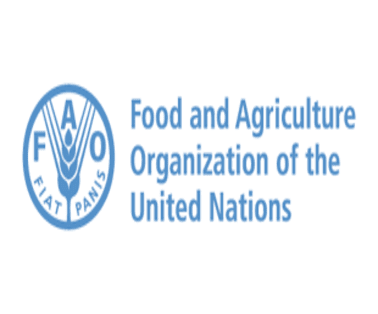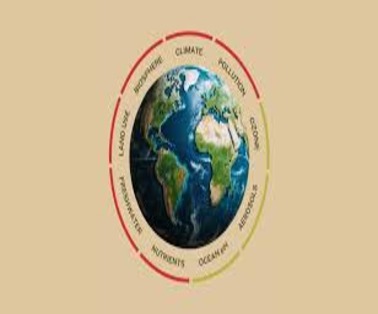The Food and Agriculture Organization of the United Nations (FAO) recently released its latest report, titled “The Unjust Climate,” which explores the unequal impact of climate change on income and adaptation in rural communities based on gender, wealth, and age.
Key Insights from FAO’s Climate Report
- For the report, FAO analysed socioeconomic data from over 100,000 rural households, representing more than 950 million people, across 24 LMICs.
- By integrating this information with 70 years of georeferenced daily precipitation and temperature data, the report examines how various climate stressors impact people’s incomes, labour and adaptation strategies, differentiating based on their wealth, gender and age.
- The study measured sensitivity to climate stressors among rural people using survey data that measure households’ on-farm, off-farm and total incomes, as well as labour dynamics. It measures exposure to various climate stressors like floods, heat stress, drought using long-term, daily georeferenced precipitation and temperature data.
Key Findings: Climate Change and Rural Poverty
Poor rural households
- With every day of extreme heat, poor rural households lose 2.4 per cent of their on-farm incomes, 1.1 per cent of the value of the crops they produce and 1.5 per cent of their off-farm income, relative to non-poor households in India and 23 other low-and-middle-income-countries (LMIC).
- If the average long-term temperatures were to increase by 1°C, rural poor households will be pushed to depend more on climate-sensitive agriculture and lose off-farm opportunities, the findings showed.
- This is because poor households tend to reduce the diversity of their income sources when exposed to heat stresses, relative to better-off households.
- Similarly, every day of extreme precipitation causes poor households to lose 0.8 per cent of their incomes relative to non-poor households, mostly driven by losses in off-farm incomes, the analysis showed.
Climate Stressors
- In an average year, poor households lose 5 per cent of their total income due to heat stress relative to better-off households and 4.4 per cent due to floods.
- In fact, extreme weather events push poor rural households to adopt maladaptive coping strategies, including distress sale of livestock and redirecting expenditures away from their farms.
- The findings illustrated that poor households reduce their investments in agriculture relative to non-poor households when faced with floods and droughts, as they redirect their scarce resources away from agricultural production towards immediate consumption needs.
- Floods and heat stress widen the income gap between poor and non-poor households in rural areas by approximately $21 billion a year and $20 billion a year, respectively, the researchers observed.
National Climate Policies
- Rural people and their climate vulnerabilities are largely absent in national climate policies.
- Less than 1% of Nationally Determined Contributions (NDC) and national adaptation plans (NAP) of the 24 analysed countries mention poor people, and only about 6% refer to farmers in rural communities.
- Only 7.5% of tracked climate finance in 2017-18 went towards climate change adaptation, with less than 3% allocated to agriculture, forestry, and other land uses.
- Agricultural policies also miss the opportunity to address gender equality and women’s empowerment and intersecting vulnerabilities such as climate change.
- An analysis of agricultural policies from 68 low- and middle-income countries done by FAO in 2023 showed that about 80% of policies did not consider women and climate change.
FAO’s Recommendations for Climate-Resilient Rural Communities
- Address challenges through targeted interventions empowering various rural populations to engage in climate-adaptive measures.
- Imperative to invest in policies and programs addressing multidimensional climate vulnerabilities of rural populations, considering their limited access to productive resources.
- Link social protection programs to advisory services, encouraging adaptation and compensating farmers for losses through cash-based social assistance programs.
- Implement gender-transformative methodologies challenging discriminatory gender norms to empower women and enhance their agency over economic decisions.
About The Food and Agriculture Organization (FAO)
- The Food and Agriculture Organization (FAO) is a specialised agency of the United Nations that leads international efforts to defeat hunger.
- Its goal is to achieve food security for all and ensure people have regular access to enough high-quality food to lead active, healthy lives.
- World Food Day, celebrated annually on October 16th, marks the founding anniversary of FAO in 1945.
- Headquartered in Rome, Italy, FAO collaborates with sister organizations, including the World Food Programme and the International Fund for Agricultural Development (IFAD).
- FAO has 195 members (194 countries and the European Union), India is a member of FAO.
- The State of the World’s Forests (SOFO), The State of World Fisheries and Aquaculture (SOFIA), The State of Agricultural Commodity Markets (SOCO), The State of Food Security and Nutrition in the World (SOFI) are some of the reports published by FAO
Conclusion
The FAO report, “The Unjust Climate,” sheds light on the challenges faced by rural communities due to climate change. It underscores the urgent need for inclusive national policies, climate finance, and gender-responsive agricultural strategies to build resilience and support rural populations worldwide.
By incorporating the right policies and funding, countries can leverage FAO’s insights to ensure sustainable agricultural development and climate adaptation for vulnerable communities.
To Download Monthly Current Affairs PDF Click here
Click here to get a free demo
Discover all about CLAT Exam



